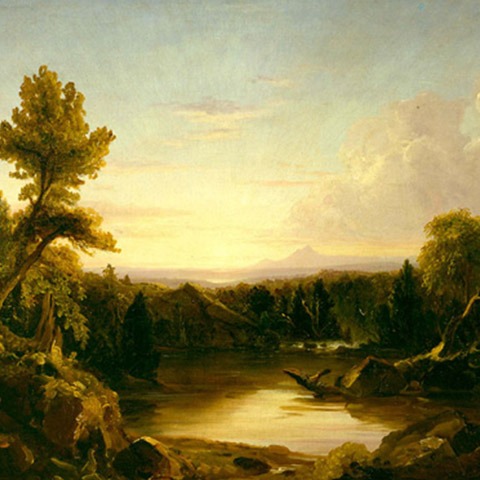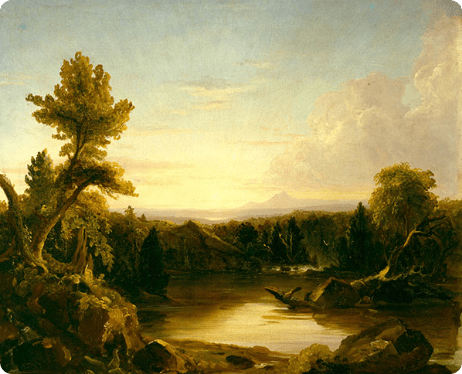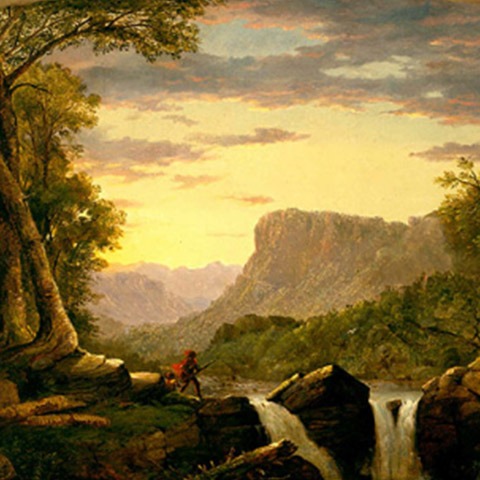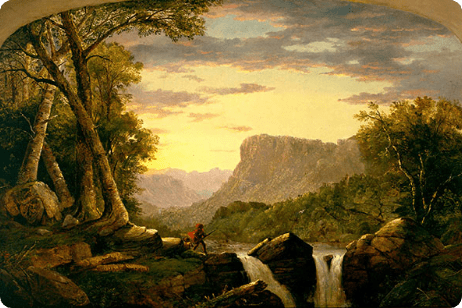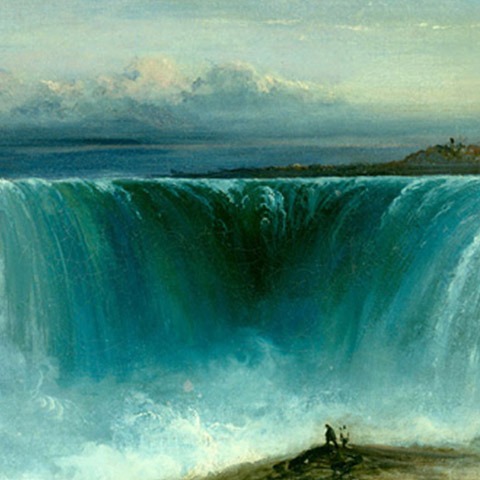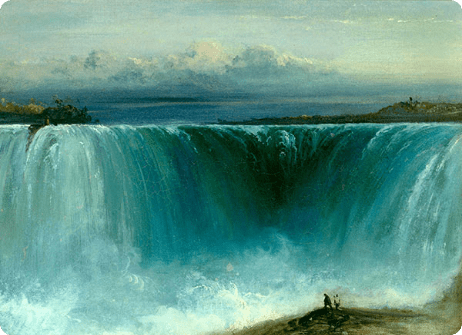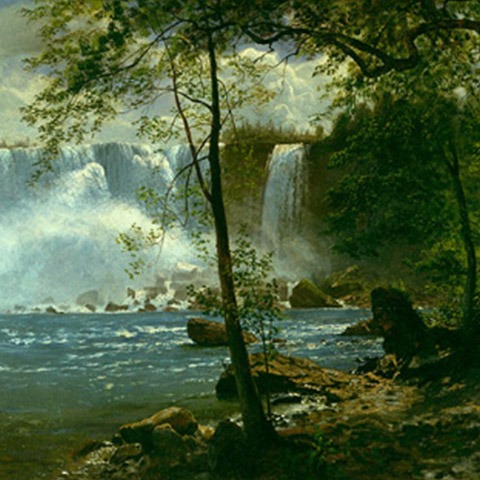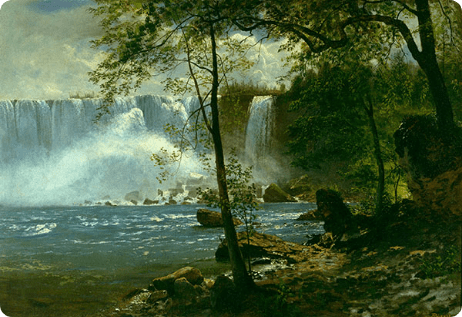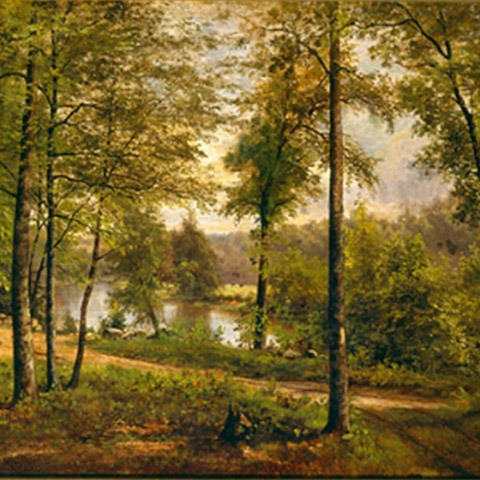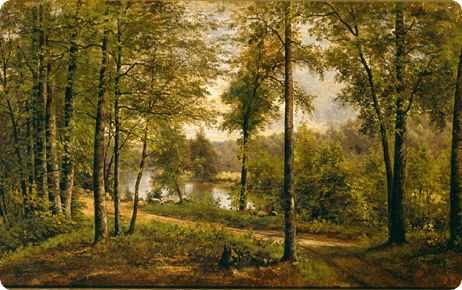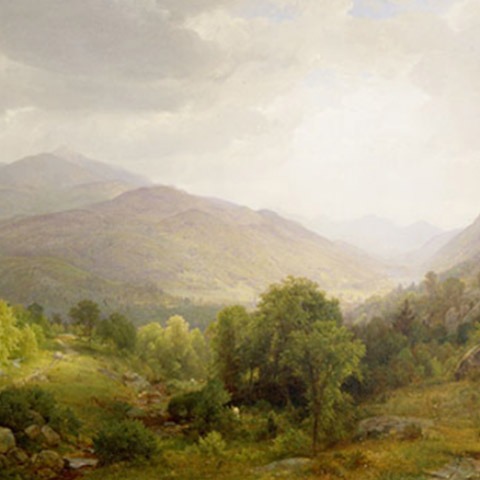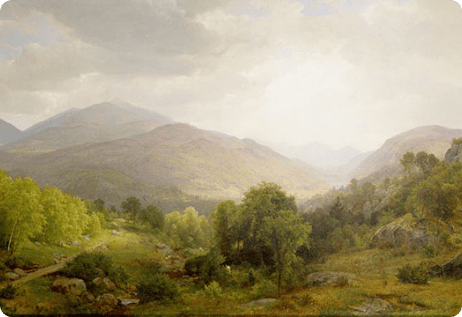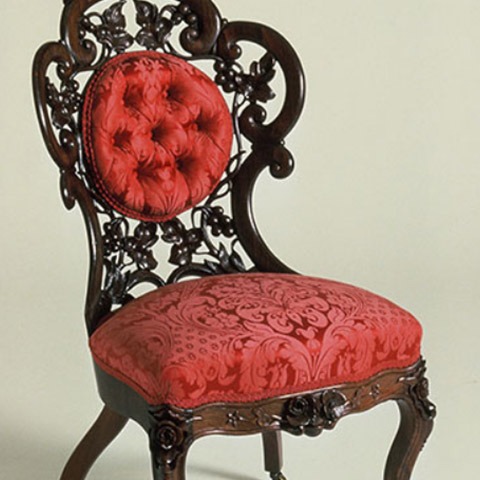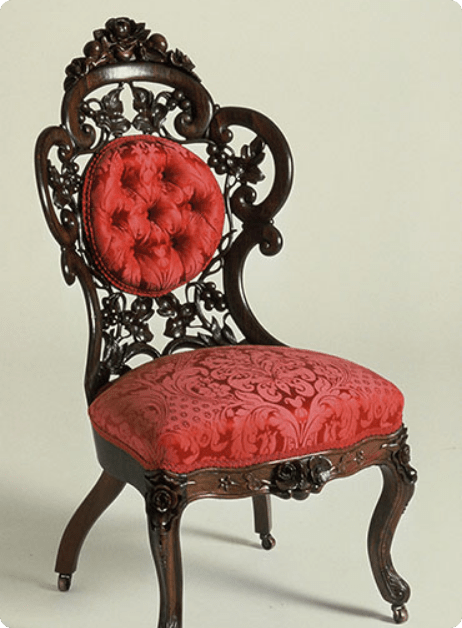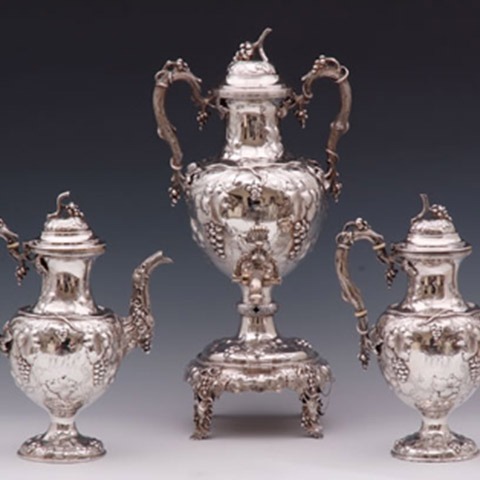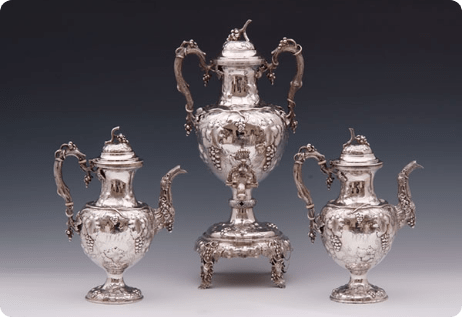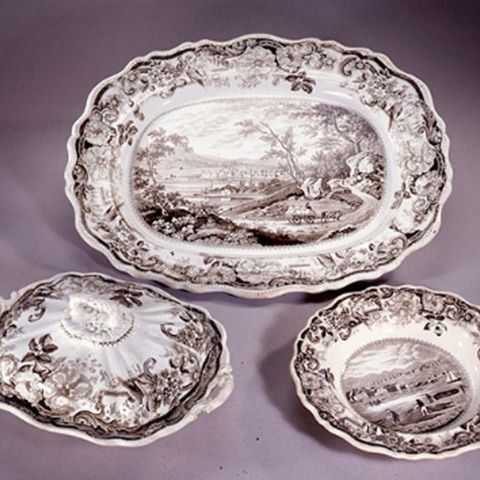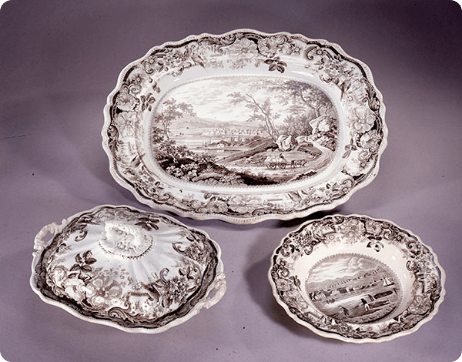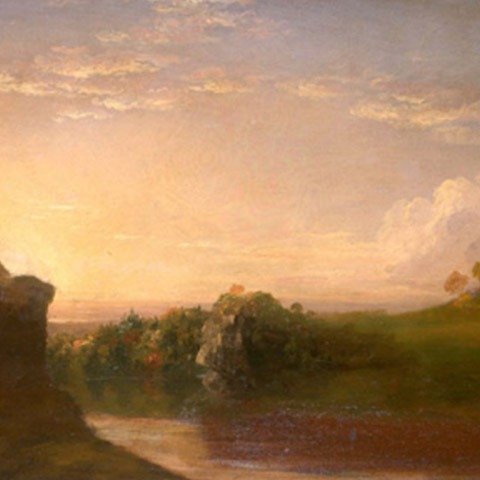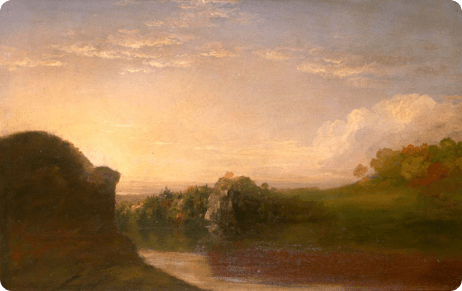Hudson River School and Landscape Art
As the United States acquired more territory in the 19th century, increasing numbers of Americans moved west. Meriwether Lewis and William Clark’s descriptions of an untamed and largely unsettled American wilderness became a popular source of artistic expression across the country. Artists such as Thomas Cole, considered the father of the Hudson River School of landscape painters, celebrated America’s natural beauty as something that set the young nation apart from Europe. Ironically, the artistic themes celebrating westward expansion often included depictions of Native Americans, whom the settlers themselves displaced. Decorative arts from this period display American artisans’ growing reliance on mechanization, often at the expense of handcraftsmanship. Large urban manufacturers widely marketed plywood and laminate-decorated furniture and mass-produced silver wares, while many furniture makers and silversmiths from more rural communities such as Delaware changed careers under the pressure of overwhelming competition.


